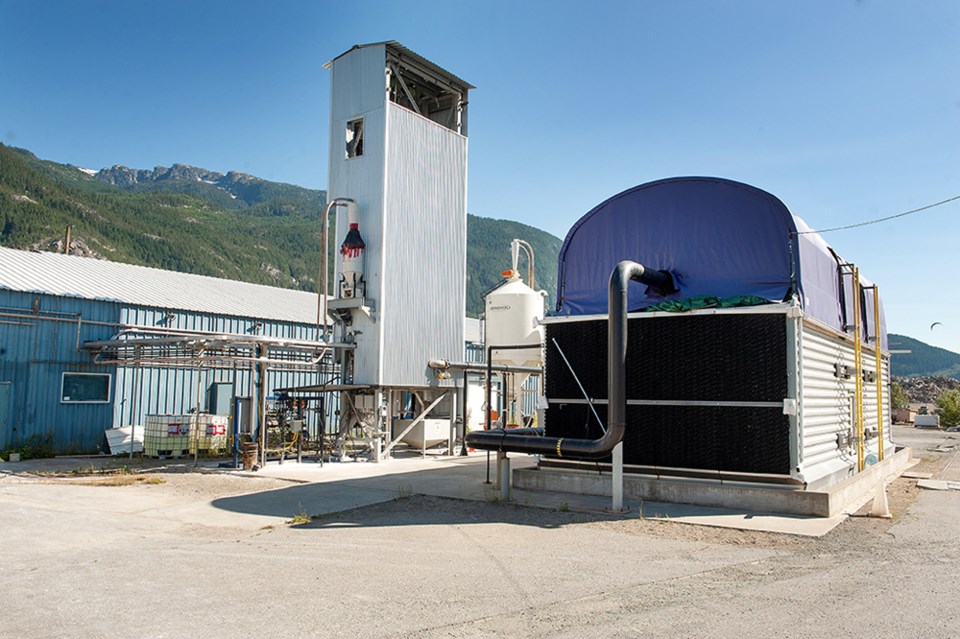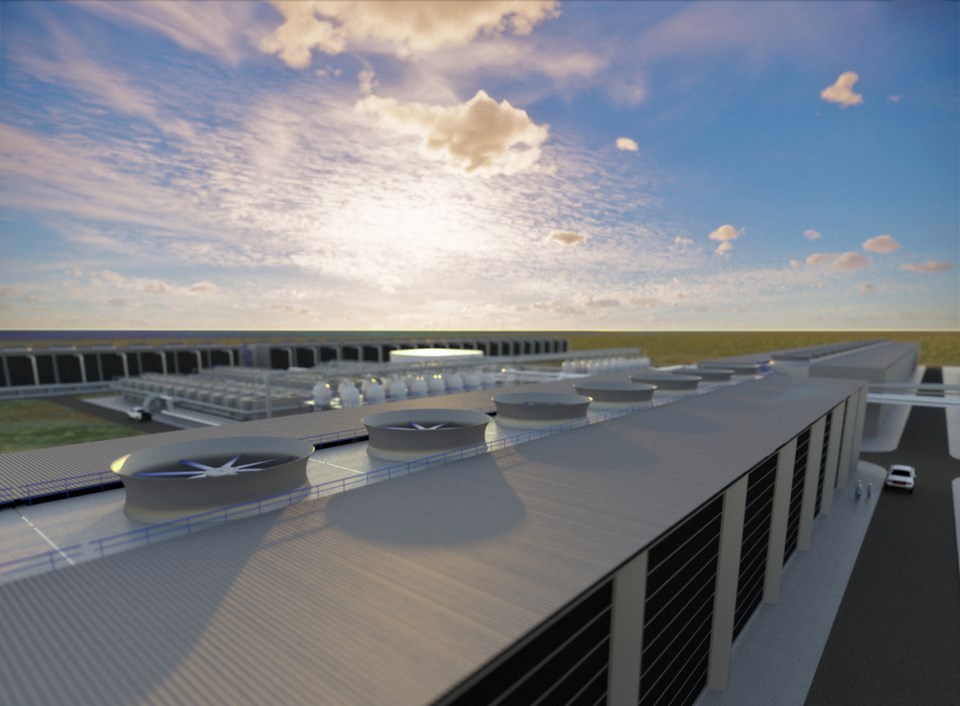It has been a heady week for Squamish's Carbon Engineering.
First, on Sept. 15, the company announced that Shopify was its first customer.
Put most simply, Carbon Engineering is a green tech company that has technology that captures carbon dioxide from the air. It has been doing so since 2015 at its plant on the Squamish Oceanfront.
"What Shopify are recognizing and being an early adopter of is that you can't stop every single emission and the planet is going to need technologies that can clean up afterward," said Steve Oldham, CEO of Carbon Engineering.
Shopify has set up a minimum $5-million annual fund to support companies and technologies that could fill that gap, Oldham said.
Shopify has entered into a contract where they are going to pay Carbon Engineering to have the CO2 from the Squamish plant sequestered, most likely in concrete.
"That way, the CO2 that is coming out of that plant in Squamish is going to be permanently sequestered and put into a building or a road or something similar," he said.
(As an aside, Oldham says the wildfire smoke currently blanketing town doesn't seem to have any impact on the operation of its equipment at its plant on the oceanfront.).
Oldham said what is important about the agreement is that Shopify is recognizing that one company has to be a pioneer and make the first move.
"The guy who bought the first computer, the first car, he didn't buy it at a cheap price. We only have cheap computers and cars today because ... people bought them and the cost comes down. So for us, having these early adopter customers willing to step up now is vital for us,” Oldham said.
Previously, Carbon Engineering was focused on using the CO2 captured from the air to produce synthetic fuels, but is now shifting focus to meet market demand, Oldham said.
"That is still a perfectly valid opportunity and business plan, but what has grown a lot in the last couple of years is the recognition that as a planet we are emitting too much and it is too hard to stop a lot of those emissions," Oldham said.
"So maybe you don't stop some of them. Maybe you accept that you are going to have to emit and continue to use fossil fuels and produce a certain amount of CO2 emissions, but you then need the mechanism to clean them up afterward. Then, removing CO2 from the air becomes a bit like a garbage take-out service."
In the last 18 months, there has been a lot more interest in the negative emissions aspects of the process that Carbon Engineering can do, Oldham said.
Amazon announced in September 2019 that it would be carbon neutral by 2040.
In January, Microsoft announced it was aiming to become carbon negative by 2030. Other companies have made similar pledges.
"To get there, they are going to have to remove some carbon because they can't stop every single emission."
On Sept. 17, it was announced that Pale Blue Dot Energy and Carbon Engineering had created a partnership to deploy Direct Air Capture — a version of a plant like that in Squamish — in the U.K.
One of the first locations being considered for a plant is in northeast Scotland.
"Our vision for what Carbon Engineering does is that we stay in Squamish, but we become and continue to be the technology experts constantly refining and making our technology the best in the world and then we license it to partners worldwide and they build plants," Oldham said.
Last month, it was announced that 1PointFive and Carbon Engineering had signed a licensing agreement enabling the commercial development of the world’s largest air capture facility in the Permian Basin — oilfields in western Texas and southeastern New Mexico — and now Pale Blue Dot is a partner in the U.K.
"So now, hopefully, we build a lot of plants in the United Kingdom and lots of plants in the United States while retaining in Squamish our think tank, our best engineers — constantly refining the technology," Oldham said.
To move forward, government approvals are required.
The U.K. has announced it will invest close to CAD$170 million (£100M) in direct air capture.
"As with all government procurements we have to go through a process and win whatever it is they decide to put out as a tender," he said.
"The more partnerships we have worldwide, the more people buying our technology, the more stable our business is. We just got our first customer; we are not yet a profitable business, so the more plants we have in Scotland, the United Kingdom, the U.S., the better."
CE’s expansion to a new Innovation Centre on the Squamish Oceanfront is scheduled to be operational in August 2021.
"It is a permanent site and will also have an office building, lab...This is a much nicer, updated facility — it is physically larger. Our plan is to use that for continuous improvements. We invent a better way of doing things; we test it there and then we ship it out to the various plants we have around the world."
The company currently employs 100 in Squamish and expects to hire about 10 more in the next year.
When Oldham joined the company in 2018, it employed about 25, of which 10 were students.
"We have grown a lot."





